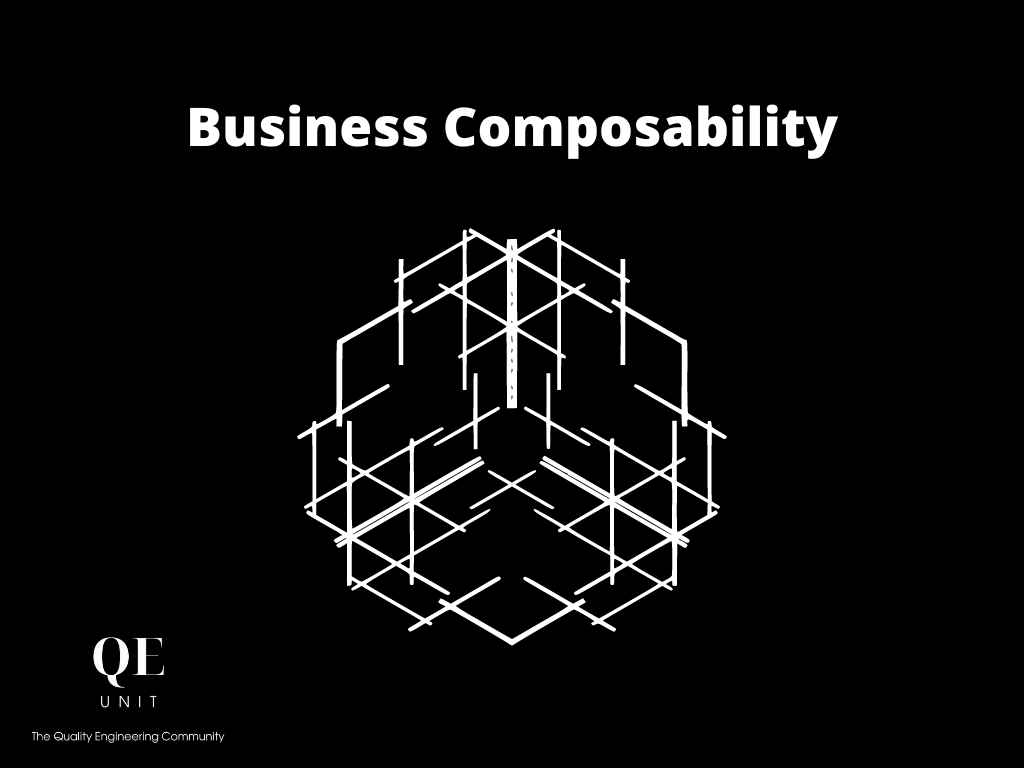“APIs, APIs, APIs.”
An overused acronym with different meanings, that all circle back to the need of performing business transactions through technology interconnectivity.
APIs were initially a technical library acting as a dictionary, but they are now the cornerstone of business exchanges required to survive in the digital ecosystem.
Organizations able to quickly expose and connect more users and partners to their services can generate much more value, faster than their competitors.
But the capability of interconnection is not native for companies with legacy systems that can hardly collaborate with digital players performing at the high standard.
This article shares the need for business composability is our ecosystem and which elements of a Quality Engineering architecture can provide such composability.
Follow the QE Unit for more Quality Engineering.
The Need for Composability
Organizations with a high composability are faster and more efficient to change the entire business giving them a competitive advantage over their competitors. They can quickly assemble part of the business to tailor more valuable digital offerings to their customers.
The “2022 CIO Agenda” report from Gartner shares that composable businesses let them stay ahead out of the pandemic developing faster new opportunities, innovative products and being more responsive to change. Composability acts as “a real antidote to risk”.
But composability is the visible part of the iceberg.
The Composability of a Business Platform
The capability to connect, assemble, and change part of the business directly depends on entire business modularity and integration. Solid enterprise architecture foundations are therefore required to provide a true composability capability.
Business composability applies modularity to any business asset so that leaders can quickly, easily and safely recompose them and create new value in response to disruption.
—“2022 CIO Agenda”, Gartner.
Three domains must be worked for business composability:
- Composable thinking
- Composable business architecture
- Composable technologies.
The first two ones need a shift in the mindset and culture of the organization starting from the top management. It’s not about maximizing efficiency through automation and up-front planning—it’s about creating a system with a high degree of flexibility favoring reactivity and speed.
When the mindset and enterprise architecture shift to develop business composability, the remaining part of technology must be addressed. A Quality Engineering architecture is what organizations require to build a true technology composability.
Organizations Thriving with Composability
Existing companies are already taking advantage of having implemented composable business capabilities they can integrate with partners, or even offer as a service to other companies. According to Gartner, Elastic Path was part of the first commerce vendor to offer Composable Commerce.
The composable services available let users integrate in a hot-plug way ecommerce verticals to create business value, without necessarily adopting the entire platform. The modules are available as a marketplace as part of the Composable Commerce Hub.
Elastic Path continued to leverage its modular and composable architecture to add external vendors as part of its value proposition. Hymate Chatbot or Contentful (major headless CMS) are for example part of the portfolio of composable services.
The company generated over $100 billion in over 170 countries in different industries ranging from retail, travel, telecoms, publishing, among others. The open and flexible architecture are at the core of the composability enabling their customers to leverage packaged business capabilities.
Composable Business with Quality Engineering
Quality Engineering is the paradigm constraining the entire software lifecycle to continuously deliver value through Quality at Speed software. Its implementation relies on the MAMOS framework acting on the 5 domains of Methods, Architecture, Management, Organization and Skills.
Illustrating the framework, methodologies like Domain-Driven Design help to structure the Architecture and the Organization; the Organization and Skills domains are essential to create the enterprise architecture for a modular business, supported by technologies.
The Architecture domain provides technology composability through progressive and concrete practices building upon the foundations of a Quality Engineering Structure and Quality Engineering Modularity, both necessary to accelerate composability.
While well-defined software modules provide the behavior change flexibility, the main challenge is to make services easy to integrate and use for multiple actors of today and tomorrow. The architecture and exposition of services through technology is the important matter for composability.
Technical solutions available to interconnect systems are ranging from files to service calls through defined protocols. A progressive Quality Engineering composability focuses on standard mechanisms widely deployed in the ecosystem based on REST APIs with specific traits.
Quality Engineering Composability relies on these 3 architecture practices:
- API-driven components
- API-layers architecture
- API-composable technology.
Yes, it’s more than talking about “APIs”.
References
Kasey Panetta, Gartner Keynote: The Future of Business Is Composable. Gartner.
Davide Petramala, Why Every Organization Should Be Composable. CIO.com.
Bill Mulligan, Steef-Jan Wiggers, The Compounding (Business) Value of Composable Ecosystems. InfoQ.
Melissa Teo, Business composability for disruptive times. CIO World Asia.
